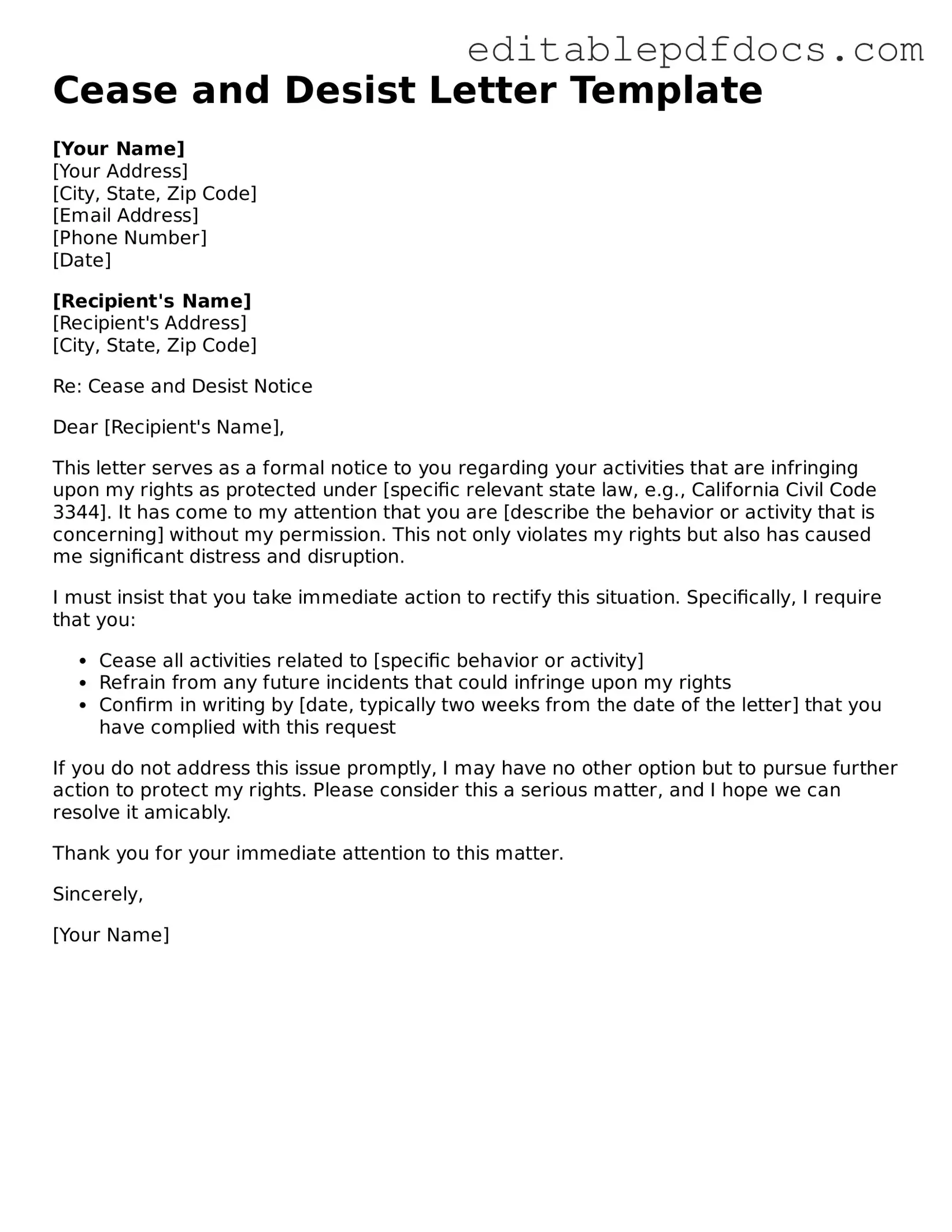When individuals decide to take legal action, one common step is to send a cease and desist letter. However, many make mistakes when filling out this important document. Understanding these pitfalls can save time and prevent complications down the road.
One frequent error is failing to clearly identify the recipient. It’s crucial to provide the full name and address of the person or organization you are addressing. Without this information, the letter may not reach the intended party, rendering it ineffective. Always double-check the spelling and accuracy of the details before sending it out.
Another mistake is vague language. A cease and desist letter must be specific about the actions you want the recipient to stop. General statements can lead to confusion and may not convey the seriousness of the situation. Clearly outline the behavior that is causing harm and provide examples if necessary.
Many people also overlook the importance of including a deadline for compliance. By not specifying a time frame, you leave the recipient without a clear understanding of how quickly they need to respond. A deadline adds urgency and demonstrates that you are serious about your request.
Additionally, some individuals forget to keep a copy of the letter for their records. Documentation is vital in any legal matter. Keeping a copy ensures you have proof of your communication should further action be necessary. It can also serve as a reference point if the situation escalates.
Another common oversight is not considering legal advice. While it may seem straightforward, the nuances of a cease and desist letter can be complex. Consulting with a lawyer can provide valuable insights and help you avoid potential pitfalls. They can guide you on the best approach and ensure your letter is effective.
Finally, many people underestimate the importance of maintaining a professional tone. Emotional language can undermine the seriousness of your request. Keep your letter respectful and to the point, focusing on the facts rather than personal feelings. A professional tone encourages a constructive response and demonstrates your commitment to resolving the issue amicably.
